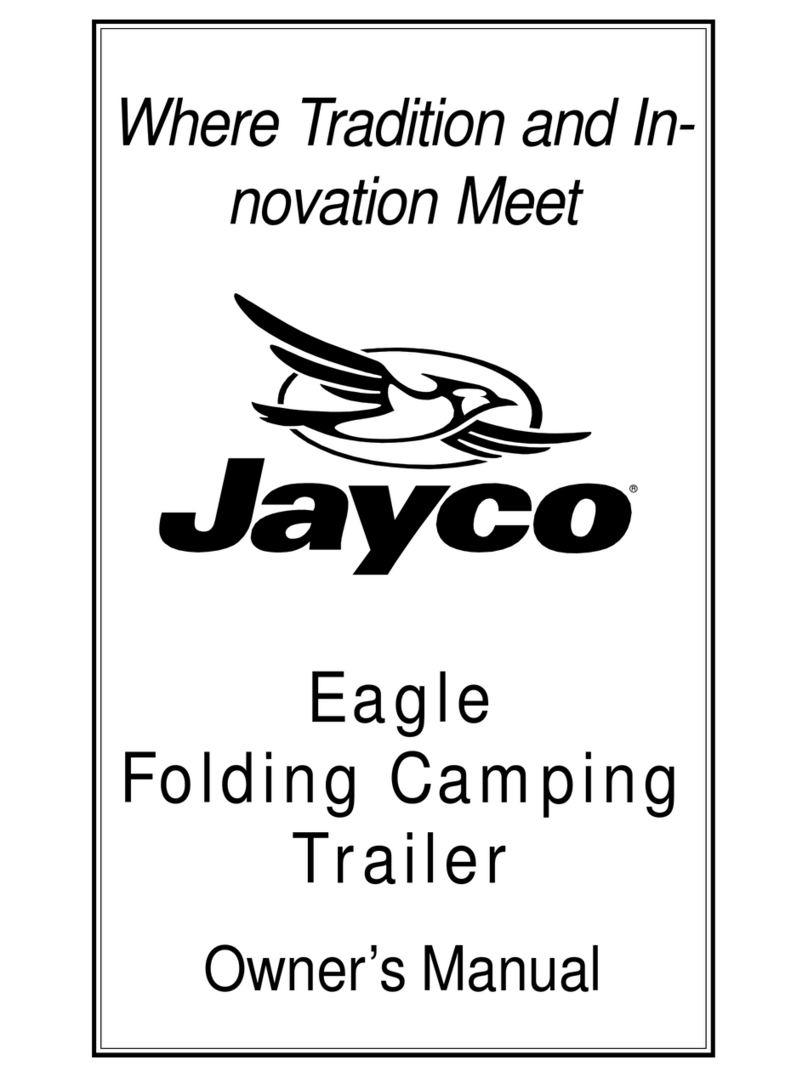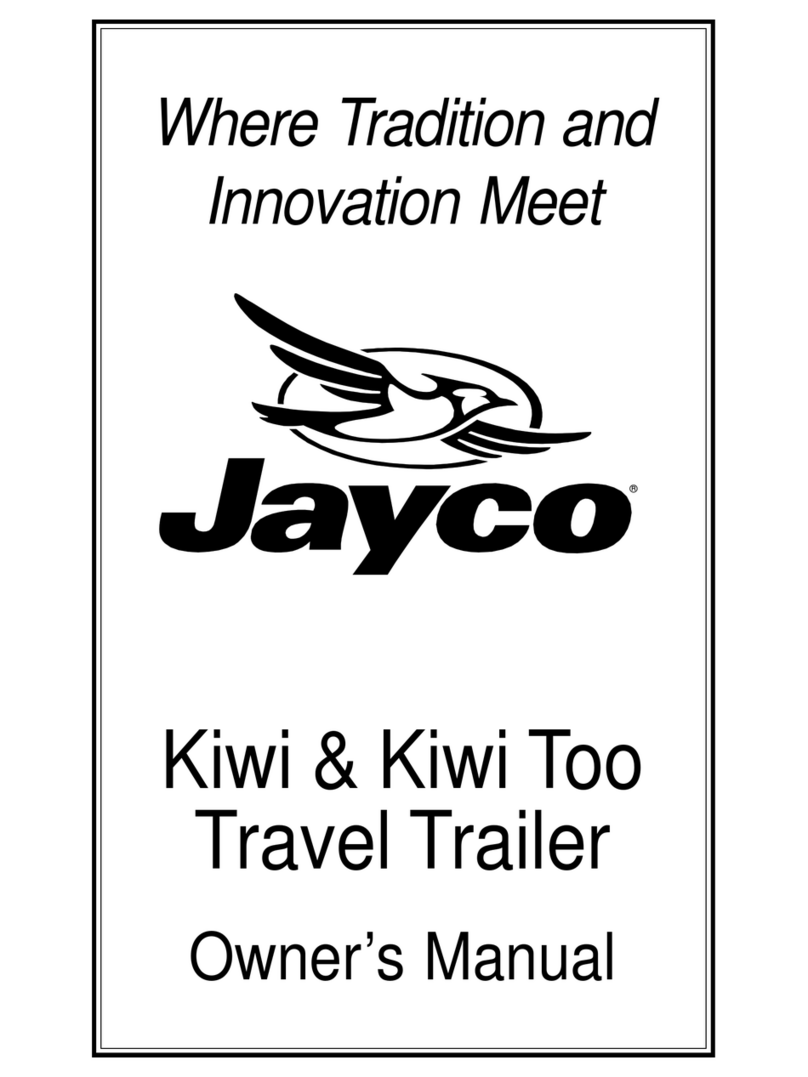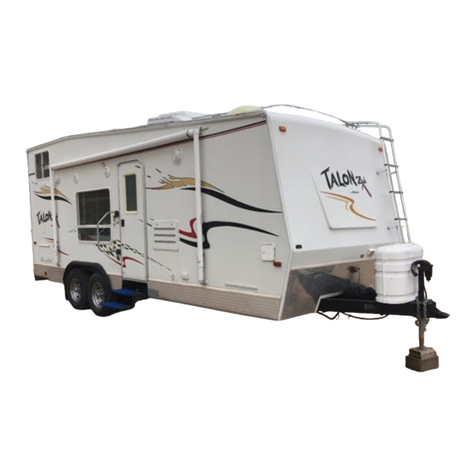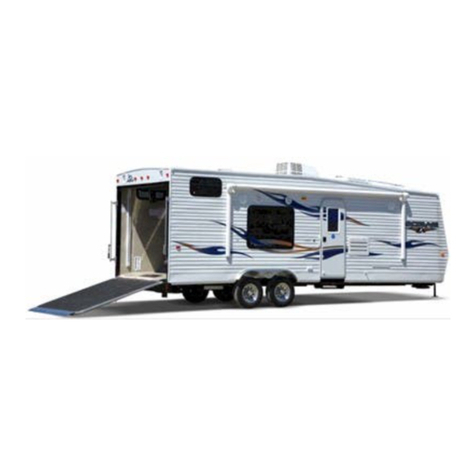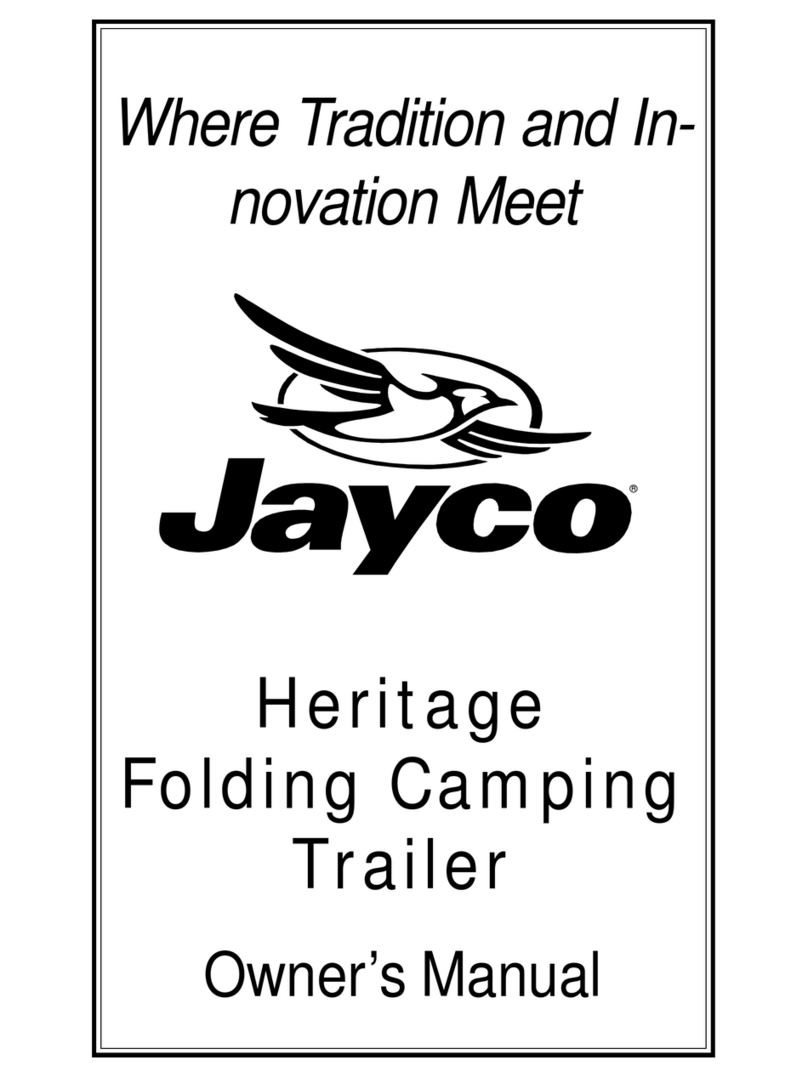
TABLE OF CONTENTS
I
WARRANTY &SERVICE
ABOUT THIS MANUAL .................................1
CHANGE OF ADDRESS/OWNERSHIP FORM..5
CUSTOMER RELATIONS..............................3
CUSTOMER RESPONSIBILITY ......................2
DEALER RESPONSIBILITY ...........................2
JAYCO CUSTOMER FIRST EMERGENCY
ROADSIDE ASSISTANCE ..........................6
JAYPLUS™EXTENDED SERVICE
CONTRACT .............................................4
MANUFACTURING PROCESS .......................2
OBTAINING EMERGENCY WARRANTY
REPAIR...................................................6
OBTAINING SERVICE AT JAYCO ..................7
OBTAINING SERVICE FOR SEPARATELY
WARRANTED ITEMS.................................7
REPLACEMENT PARTS ...............................7
REPORTING SAFETY DEFECTS ...................1
SAFETY ALERTS ........................................1
SUGGESTIONS FOR OBTAINING SERVICE ....3
THE GOODIE BAG ......................................1
THE JAYCO TRAVEL CLUB ..........................4
TOWABLE LIMITED WARRANTY ...................8
UPDATE YOUR CONTACT INFORMATION......4
OCCUPANT SAFETY
CARBON MONOXIDE ALARM .....................14
EMERGENCY EGRESS WINDOW................12
EMERGENCY WEATHER PLANNING ...........11
FIRE EXTINGUISHER.................................12
FIRE SAFETY ...........................................12
PROPANE ALARM.....................................15
SMOKE ALARM.........................................13
PRE-TRAVEL INFORMATION
FIRST SHORT TRIP...................................21
5TH WHEEL HITCH (CUSTOMER SUPPLIED) 18
LOADING YOUR RV..................................20
MOR/RYDE®HITCH &SUSPENSION (IF SO
EQUIPPED) ...........................................19
RV BRAKE SYSTEM .................................19
TOW VEHICLE ..........................................17
VEHICLE IDENFICATION NUMBER (VIN)
EXPLAINED ...........................................17
VEHICLE LABELS......................................17
WEIGHING YOUR TOW VEHICLE &RV.......20
WEIGHT LABELS ......................................18
TOWING &HANDLING
BREAKAWAY SWITCH ...............................26
DRIVING &ALCOHOL................................26
EMERGENCY STOPPING ...........................29
EMERGENCY TOWING ..............................30
FIFTH WHEEL HITCHING PROCEDURE.......27
FIFTH WHEEL LANDING GEAR ..................27
RV DRIVING SCHOOLS &SEMINARS.........26
STABILIZER JACKS ...................................27
TOWING ..................................................27
WIRE HARNESS/CONNECTOR PLUG .........26
RV TIRES
CHANGING THE TIRE................................32
SPARE TIRE CARRIER (IF SO EQUIPPED) ..31
WHEEL LUGS...........................................32
ELECTRICAL SYSTEMS –50 AMP
120-VOLT CIRCUIT BREAKERS..................36
12-VOLT BATTERY DISCONNECT ..............39
12-VOLT DC OUTLET (IF SO EQUIPPED) ...40
12-VOLT DC SYSTEM...............................39
12-VOLT FUSE PANEL ..............................40
240/120-VOLT AC SYSTEM......................35
50 AMP POWER CORD .............................36
AUXILIARY BATTERY (CUSTOMER
SUPPLIED)............................................39
BATTERY ISOLATOR FOR YOUR TOW
VEHICLE (CUSTOMER SUPPLIED)...........40
CALCULATING ELECTRICAL LOAD .............38
COMMAND CENTER .................................35
CONVERTER ............................................37
ELECTRICAL SYSTEM PRECAUTIONS ........35
GENERATOR (IF SO EQUIPPED)................38
GENERATOR PREP WITH GAS TANK..........38
GFCI RECEPTACLE OUTLET ....................37
IN CASE OF AN ELECTRICAL FIRE ............35
INVERTER................................................40
FUEL SYSTEM
EXHAUST GAS FUMES .............................43
FUEL GAUGE ...........................................43
FUEL SAFETY ..........................................41
FUEL STATION (IF SO EQUIPPED).............41
FUEL TANK(S)..........................................42
PLUMBING SYSTEM
12-VOLT WATER PUMP &SWITCH ............47
BATHROOM TUB/SHOWER........................49
BLACK &GREY TANK DRAINS ..................54
BLACK TANK FLUSH.................................55
BLACK/GREY WATER HOLDING TANKS .....53
BLACK/GREY WATER SYSTEM..................53
DRAINING THE FRESH WATER SYSTEM ....50
FAUCETS.................................................49
FRESH WATER CONNECTIONS .................46
FRESH WATER HOLDING TANK.................45
MONITOR PANEL......................................45


